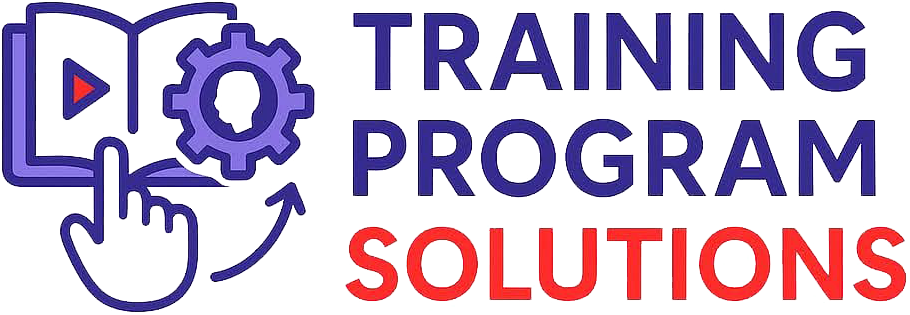In today’s fast-paced business environment, a Learning Management System (LMS) has become an essential tool for organizations to deliver, manage, and track training programs. Whether you’re onboarding new employees, upskilling your workforce, or offering compliance training, the right LMS can significantly enhance the learning experience and improve overall organizational performance. However, with so many options available in the market, choosing the right LMS for your organization can be a daunting task.
This blog will guide you through the key factors to consider when selecting an LMS, ensuring you make an informed decision that aligns with your organization’s goals, learning needs, and future growth.
1. Understand Your Organization’s Training Needs
Before diving into the world of LMS providers, it’s important to identify your organization’s specific training needs. Consider the following questions:
- What type of training will you offer? Will your LMS be used for employee onboarding, compliance training, soft skills development, technical training, or all of the above?
- How many users will need access? The size of your organization and the number of employees who will use the LMS will impact your choice. Some systems are better suited for smaller teams, while others are designed to scale for large, global organizations.
- Do you need mobile learning or offline capabilities? In today’s remote and hybrid work environments, offering training on mobile devices or enabling offline access may be crucial for employees who are often on the go or work in low-connectivity areas.
By understanding your training needs and goals, you can narrow down your LMS options and choose one that best supports your organizational objectives.
2. Scalability and Flexibility
As your organization grows, so should your LMS. A scalable LMS can accommodate increasing numbers of users, more complex training programs, and a growing library of content. This ensures that the system you choose will continue to meet your needs as your company evolves.
Look for an LMS that offers flexibility in terms of content delivery, user management, and reporting. The ability to customize the system to fit your organization’s specific requirements (e.g., branding, permissions, workflows) is essential. A flexible LMS will also allow you to integrate with other business tools and systems, such as HR software or performance management platforms, making it a seamless part of your overall tech ecosystem.
3. User-Friendly Interface
An LMS should be easy to navigate for both administrators and learners. If the system is difficult to use or not intuitive, it can lead to frustration and low adoption rates, ultimately undermining the effectiveness of your training programs.
When selecting an LMS, prioritize platforms with an intuitive interface that requires minimal training for both employees and administrators. The learning experience should be engaging, with a simple, organized layout that makes it easy for employees to access courses, track progress, and engage with learning materials.
4. Reporting and Analytics Capabilities
One of the key benefits of using an LMS is the ability to track learner progress and measure the effectiveness of training programs. An LMS with robust reporting and analytics features allows you to gain valuable insights into learner behavior, engagement levels, and knowledge retention.
Look for an LMS that offers real-time reporting, detailed analytics, and customizable dashboards that give you visibility into key metrics such as course completion rates, learner assessments, and overall training performance. With these insights, you can make data-driven decisions to continuously improve your training programs and achieve better outcomes.
5. Integration with Existing Systems
Your LMS will likely need to integrate with other systems within your organization, such as your Human Resources Information System (HRIS), Customer Relationship Management (CRM) tools, or performance management software. Ensuring that your LMS can seamlessly integrate with these systems will save time and reduce the risk of data silos.
Check whether the LMS supports standard integrations through Application Programming Interfaces (APIs) or pre-built connectors. Integration capabilities are especially important if you plan to automate workflows, such as enrolling new hires in training courses automatically or syncing learner data across systems.
6. Content Management and Delivery
Consider how the LMS handles content management and delivery. Does it allow you to easily upload and organize training materials, such as videos, documents, and quizzes? Can you create custom courses, or do you need to rely on third-party content? Having the flexibility to develop and deliver a variety of content formats is essential for creating a well-rounded learning experience.
Additionally, look for an LMS that offers multimedia capabilities, interactive features, and learner engagement tools like gamification, discussion forums, or social learning features. These elements can make training more engaging and effective, leading to higher employee participation and retention of knowledge.
7. Customer Support and Training Resources
A reliable LMS provider should offer excellent customer support, especially during the initial setup and implementation phases. Look for a vendor that provides a comprehensive support package, including training resources, tutorials, and responsive customer service.
Check if the LMS provider offers ongoing support for troubleshooting, system updates, and user guidance. Some vendors offer dedicated customer success managers or online communities where you can connect with other users to share best practices and get advice.
8. Security and Compliance
Data security and privacy are critical when choosing an LMS, especially if you’re dealing with sensitive employee information or compliance-related training. Ensure that the LMS provider adheres to relevant security standards, such as GDPR, HIPAA, or other data protection regulations, to safeguard your organization’s data.
The LMS should also include features like role-based access controls, secure authentication, and data encryption to protect both learner data and training content. Verify that the provider offers regular security updates and compliance certifications to ensure the system remains secure.
9. Cost and ROI
Cost is an important factor when selecting an LMS, but it should not be the only consideration. While it’s tempting to choose a low-cost option, remember that the LMS should provide a return on investment by improving training efficiency, enhancing employee performance, and supporting organizational growth.
Consider the total cost of ownership (TCO), which includes initial setup fees, ongoing subscription costs, training, and support. Compare the features and capabilities of each LMS with its price to ensure you’re getting the best value. In some cases, investing in a more expensive LMS that offers better scalability, customization, and analytics could lead to long-term savings and greater business impact.
Conclusion
Choosing the right Learning Management System for your organization is a critical decision that can significantly impact the success of your training and development initiatives. By considering factors like scalability, user-friendliness, reporting capabilities, integration, and cost, you can select an LMS that aligns with your organization’s needs and goals.
Take the time to evaluate your options, test different systems, and involve key stakeholders in the decision-making process. With the right LMS in place, you can create a dynamic, engaging, and efficient learning environment that empowers your employees to grow, develop new skills, and contribute to the success of your organization.






